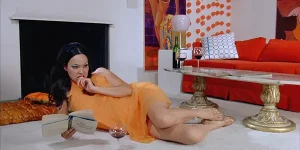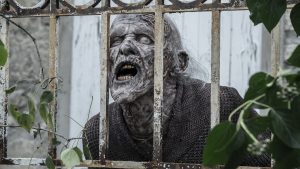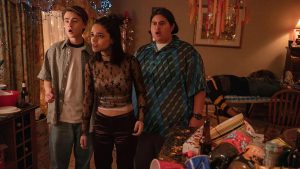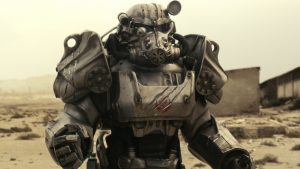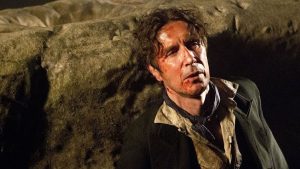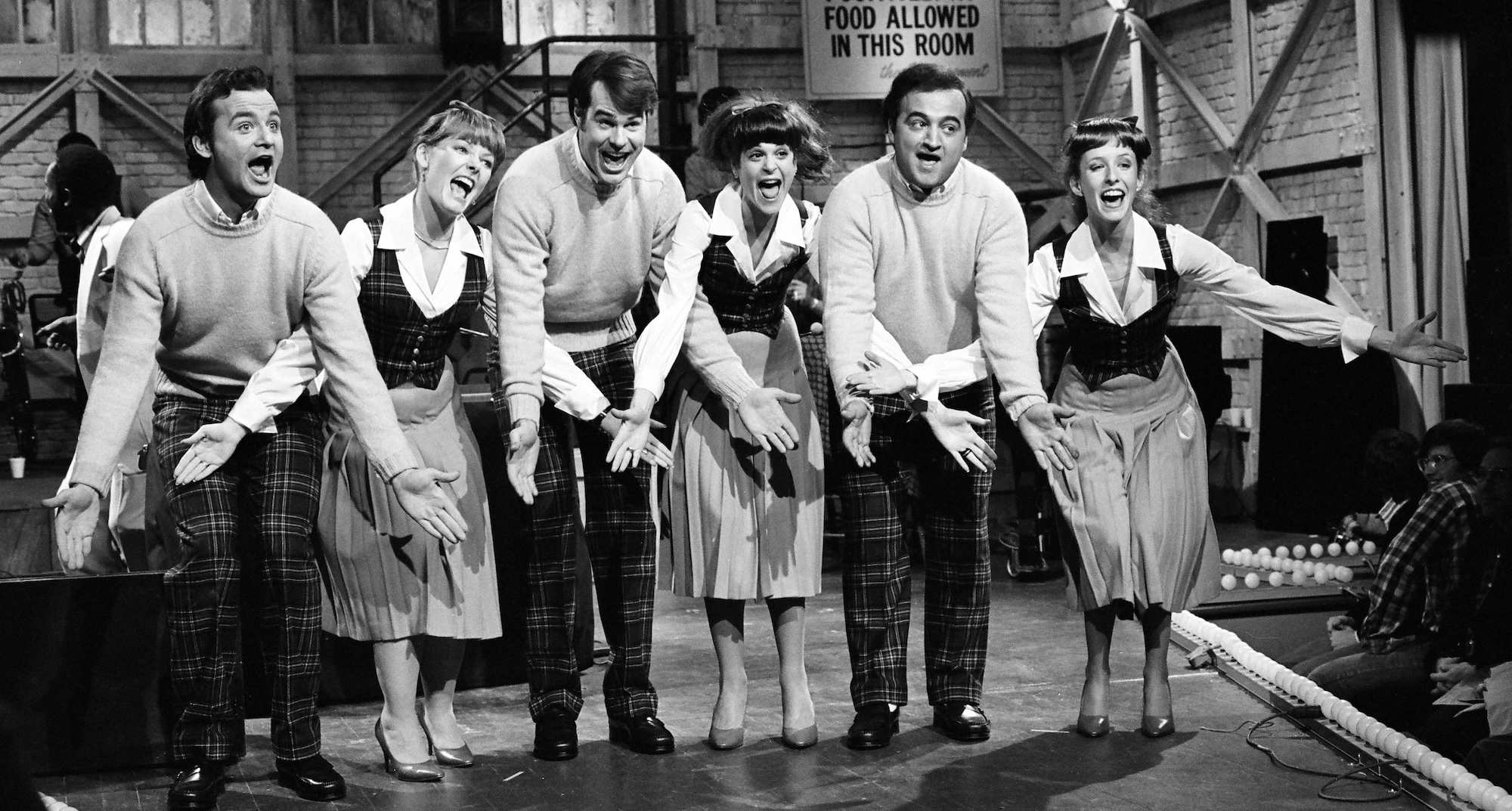
When Saturday Night Live began, it wasn’t even called Saturday Night Live. That honor belonged to a rival variety show hosted by Howard Cosell that launched the same year on ABC primetime. Hence why the young, hungry, and immensely talented sketch comedians assembled in 1975 were dubbed the “Not Ready for Primetime Players.”
That earliest and now quasi-mythical first class of SNL alumni remain the only ones to hold that title. Perhaps this is because the joke stopped working after many of them proved more than capable of carrying a primetime television series. In fact, most of them went on to have successful careers on TV, the Broadway stage, and for the precious and most spectacular few… in the movies.
Ever since Chevy Chase exited SNL after its first season, the series has been viewed—sometimes to creator and producer Lorne Michaels and NBC executives’ consternation—as a launchpad for movie stardom. Chase was the first to duck out, but he’d soon be followed by John Belushi, Dan Aykroyd, and a host of alums ready for their Tinseltown close-up. Some careers obviously panned out better than others, yet for a shockingly long time over the next 49 years, SNL cast members proved a reliable factory for producing big screen headliners. But who from SNL’s comedy campus hit it biggest at the multiplex?
*Editor’s note: This article is primarily focused on movie careers, so while a number of SNL stars went on to have big success in primetime television, they may be absent from this list. Also just a reminder: Steve Martin was never a cast member, he just hosted 16 times (including eight times with the original cast).
20. Robert Downey Jr.
We begin with perhaps the biggest movie star to come out of SNL… albeit by sheer coincidence. Robert Downey Jr. has the quizzical honor of being one of many one-time cast members during what has been widely described as Saturday Night Live’s worst year: the 1985-1986 season. This was the troubled rebuilding year that marked Lorne Michaels’ return to the series as lead producer and veritable showrunner after a five-year absence. However, rather than being a “return of the king” triumph, the season was a creative misfire with only Jon Lovitz and a few other key personnel from Michaels’ all-new hires surviving an end of season culling.
Downey was 20 at the time, and despite the unceremonious firing bounced back by virtue of his megawattage talent. Shortly afterward he was singled out as one of the most promising young actors of his generation—a promise he fulfilled with countless dividends to Disney shareholders after his middle-age comeback via Iron Man. Needless to say the newly minted Oscar winner remains one of the biggest stars of the world, albeit with little to no thanks to his time in 30 Rockefeller Center’s Studio 8H.
19. Ben Stiller
Another worthwhile but somewhat obligatory inclusion to this list is Ben Stiller, who despite his wonderful acting and directing career, suffered from a markedly awkward tenure on SNL. That dance with Lorne Michaels’ late night institution began in ’87 when the 22-year-old Stiller appeared in a single pretaped short film during the spring. A few years later, Stiller was added to the cast in 1989, but it would be charitable to say he even appeared on the series for a season. In reality, he was featured in four episodes between March and April. At the time, Stiller wanted to continue the tradition of SNL short films set by Albert Brooks in the show’s first year (or Andy Samberg and Please Don’t Destroy in later eras). However, the series was then relying almost entirely on live sketch comedy—a form of performance that the stage-shy Stiller hated so much he quit.
Don’t cry for Ben Stiller though, he got to experiment in his short film/taped sketch comedy ideas via MTV’s The Ben Stiller Show from 1990 to 1993, which obviously paved the way for a movie career that was often at its best when Stiller was also writing and directing (see: Zoolander, Tropic Thunder, and now Apple’s Severance).
18. Julia Louis-Dreyfus
We now enter the portion of this list where we acknowledge cast members who’ve had solid film careers—even if their biggest successes were still on television. No one would fault Julia Louis-Dreyfus for the latter though, with the SNL alum doing all-time great work in the medium via Seinfeld (a series co-created by SNL writer Larry David) and HBO’s Veep. Yet she’s also built an impressive film catalog, including when she played divorcée Eva opposite James Gandolfini in Nicole Holofcener’s Enough Said.
Before all of that success, however, Louis-Dreyfus had a bumpy time on SNL, appearing as a cast member during the years producer Dick Ebersol ran the series. More commercial and conventional in his thinking than Michaels, Ebersol’s years were defined by either writing entire seasons around a homegrown SNL star like Eddie Murphy, or outsourcing that job by hiring quasi-stars on the rise like Billy Crystal and Martin Short. As a consequence, Louis-Dreyfus was one of many cast members who felt underused by the series. Still, the gig did offer her the opportunity to work with a writer who adored her while enduring his own contentious relationship with Ebersol: Larry David.
17. Bill Hader
One of the biggest breakout stars on SNL in recent years, Bill Hader is beloved by fans of the series (or just viral YouTube videos). His character Stefon remains a still-quoted and memed social media favorite more than a decade after he left the series.
Hader’s breakthrough post-SNL is clearly with the critics and awards darling Barry, in which Hader plays a hitman who really just wants to be an actor. However, Hader has enjoyed a prolific film career that’s seen him feature in box office hits like Trainwreck, Superbad, It: Chapter Two, and Pixar’s Inside Out. Not quite a movie star, he remains an actor audiences and critics enjoy seeing when he does show up, often stealing scenes if not the whole film. And who knows, if his work directing select episodes of Barry is any indication, we might soon add director to those cinematic talents.
16. Damon Wayans
Damon Wayans’ post-SNL success is all the more remarkable when one considers how fraught his one year on Saturday Night Live actually was. In a story that should read as familiar for many actors of color on SNL during the 20th century, despite being cast for his spontaneity as a comic and sketch comedian, Wayans found himself frustrated by frequently cut sketches and otherwise thankless walk-on roles where he’d have one line. At the end of the season that came to a head when, during a sketch called “Mr. Monopoly,” Wayans was reduced to another one-line part as a straight man: a cop. So he decided to create a funny character in the sketch by playing it as flamboyantly gay and improvising dialogue that threw off the entire sketch (sabotaged, some might say). Afterward Michaels fired Wayans on the spot, with the latter claiming he was told “you’ll never work in show business” again (as per James Andrew Miller and Tom Hales’ book Live from New York).
Well, he did work again. A lot. One of his biggest post-SNL career hits was in fact the TV series In Living Color, a sketch comedy show where Black performers were front and center. Wayans, however, had big screen success with a variety of niche and cult classics like Major Payne, Mo’ Money, The Great White Hype, and The Last Boy Scout opposite Bruce Willis.
15. Jason Sudeikis
During the late 2000s and early 2010s, Jason Sudeikis was one of SNL’s go-to clutch players, using an often breezy and laid back demeanor to twist straight men into charming (or smug) foils for whatever is happening the scene. Whether it was as Mitt Romney, the guy dancing behind Kenan Thompson on “What’s Up with That?,” or simply as a character known as “the A-Hole,” Sudeikis brought a pleasant charm that walked a careful line between amusing and smug. He then kept strolling to the local cinema.
This was proven by early 2010s comedy hits (remember those?) We’re the Millers and Horrible Bosses. Yet there was untapped potential to this typecasting, as proven by a particularly nasty turn in the wildly underrated Colossal where Sudeikis starred opposite Anne Hathaway, and finally then back on the small screen when Apple’s Ted Lasso became a household name and balm during the COVID pandemic. While we were moved by Sudeikis’ goofy (and sometimes anguished) grin on this beloved series, in terms of movie careers, it’s a whole other football game.
14. Martin Short
An SNL legend who is still enjoying zeitgeisty hits in his 70s, Martin Short might be higher on this list if not for the fact that his career was not made by SNL. Instead he made SNL buoyant during its still rocky early ‘80s period when the series seemed destined for cancellation. Before the fall of 1984, the show largely survived due to the dazzling talent of Eddie Murphy, but by Short’s season, Murphy was already well done with SNL, pretaping sketches in March so he could be off the show by April and May. So Ebersol’s solution was to make the following season an event by hiring some already pseudo-stars, including Billy Crystal, Christopher Guest fresh off This Is Spinal Tap, and Martin Short.
Short was a somewhat less known commodity to American viewers, but he’d for years been carving out a sketch comedy niche for those who knew where to look on SCTV, opposite John Candy, Catherine O’Hara, and Eugene Levy. He brought much of that same manic energy to SNL for a year, creating hit characters like Jiminy Glick and Ed Grimley. He then left after it was over to immediately star in his first Hollywood hit, The Three Amigos, a film which paired him opposite fellow SNL favorites Steve Martin and Chevy Chase. The former of which would become the source of one of the most important professional and personal friendships in Short’s life, with Short and Martin co-starring in the Father of the Bride movies and (eventually) Only Murders in the Building.
Short also has enjoyed a long film career with largely supporting work in ensemble pieces like Mars Attacks! and Innerspace. Although for those who’ve never seen the absolutely demented Clifford, in which Short took the starring role as the child from hell who chooses chaos (and he was 43 at the time of filming), we cannot recommend it enough.
13. Chris Rock
One of the now legendary “bad boys of SNL” who came up on the series in the early ‘90s, Chris Rock was good friends with fellow young gun hellraisers of that time, Chris Farley, Adam Sandler, and David Spade. However, as is again a familiar refrain for Black actors, Rock struggled with finding enough floorspace to create beloved characters and sketches during his three years on the show. Even so, the extraordinarily talented standup comic did not sweat a post-SNL career that saw him quickly selling out arenas while on comedy tour and appearing, ahem, on In Living Color before launching his own zeitgeisty sketch/standup hybrid series on HBO.
This soon transitioned to a respectable movie career that is still going. Early on Rock found himself dubiously starring opposite the likes of Mel Gibson and Joe Pesci in Lethal Weapon 4, where the actor was allowed to do standup routines about phone companies—other memorable early roles include New Jack City and Dogma—but soon Rock found himself leading his own comedies like Head of State, Death at a Funeral, I Think I Love My Wife, and Top Five, the latter two of which benefited from Rock also writing and directing toward his strengths as an actor, and away from his limitations.
12. Billy Crystal
Another actor who would be much higher if SNL had been his real start, Billy Crystal, like the aforementioned Martin Short, joined SNL as a recognizable talent in 1984 after starring on the sitcom Soap for four seasons. Although his casting on SNL as the new season’s biggest headliner must have been especially sweet since Crystal was supposed to be in the cast, the beloved Not Ready for Primetime Players, in 1975. He even had a sketch in the first episode which was cut for time at the last minute by Lorne Michaels. This painful incident caused Crystal’s manager to insist the young no-name talent walk out the studio minutes before airtime, fracturing Crystal’s relationship with Michaels for years to come.
Returning to SNL glory nine years later proved a benefit for Crystal though, who as an already known TV star immediately went supernova. In another nine years, he’d be one of the biggest comedy movie stars in the world, having appeared in When Harry Met Sally…, The Princess Bride, City Slickers, and Running Scared.
11. Tina Fey
The first woman to become head writer of SNL in 2000, Fey proved a tremendously influential voice in refreshing the aging comedy institution for the 21st century. Also acting as a Weekend Update anchor for the next six years, Fey saw the role act as a launchpad into a film and TV career that spans as much writing and producing as it does acting.
Admittedly, her showiest movie star turn was in the romantic comedy hit, Date Night, but Fey also wrote the teen comedy classic Mean Girls at the beginning of the 2000s, which she also appeared in. That film spawned a Broadway musical and then a movie musical remake, in which she also appeared. Fey also starred opposite fellow SNL alumni Amy Poehler in Baby Mama before both found their biggest success on Must-See TV with Fey creating and starring in 30 Rock, and Poehler starring in Parks and Rec.
10. Chris Farley
Adam Sandler famously said Chris Farley was the funniest person he ever knew, and the tragedy of that is Farley never lived long enough to reach that full potential. An absolute hurricane of talent and energy, Farley erupted every week on SNL when he walked away with the series between 1990 and 1994. He was also fired by Lorne Michaels for infamously bad behavior behind the scenes where drugs and substance abuse only heightened “the boys club” label the show earned throughout its first 30 years.
Still, Farley easily transitioned to movies when his post-SNL career began with a certified hit and now comedy classic, Tommy Boy (which Michaels also produced). The films Farley made afterward were of more dubious quality, but several of them were popular at the time, and this history nerd laughed harder at Almost Heroes than he should probably admit. Farley was such a force of nature that if he had lived long enough (and more wisely), he could have been one of the great comedy film stars of his generation. As it is, for those who grew up in the ‘90s, he still made a hell of an impact.
9. Kristen Wiig
One of the SNL MVP stars to come out of the 2000s, Wiig’s breakthrough success was indicative of how the series’ sense of humor has broadened, as well as a testament to her own talent. Wiig created many popular SNL characters over her seven years as a cast member, including Gilly, Surprise Sue, and one-fifth of “The Californians.” Her best role though was one she co-wrote for herself with Annie Mumolo: the character of Annie in Bridesmaids (2011).
One of the best comedies of the last 20 years, Bridesmaids is a scathingly funny and horrifying look at the marriage industrial complex from the vantage of an aimless, unhappy thirtysomething woman whose life totally combusts by the time wedding season rolls around. The film led to Wiig starring in the 2016 Ghostbusters remake to mixed success, but Wiig’s continued to do good work in films like The Skeleton Twins (opposite Bill Hader), the criminally underrated Barb and Star Go to Vista Del Mar (a reunion for Wiig and Mumolo), and even as a supervillain in the Wonder Woman sequel. Wiig also starred in one of the few good SNL movies opposite former castmate Will Forte: MacGruber, a little-seen ‘80s action movie parody that is reportedly a personal favorite of Christopher Nolan.
8. Dan Aykroyd
Another member of the original cast, Dan Aykroyd was arguably the glue that held those first five years together. Never quite as big as Chevy Chase or John Belushi, Aykroyd arguably proved more adept at adapting to new characters and working well with everyone. He also created or co-created many iconic recurring sketches during these years, including “The Coneheads,” “Two Wild and Crazy Guys,” and “Dangerous Toys.” He also holds the distinction of uttering the words “Jane, you ignorant slut” for the first time on American broadcast.
Aykroyd left SNL to star opposite former castmate and buddy Belushi on The Blues Brothers, perhaps the one truly great movie derived from an SNL sketch. Aykroyd would star in several more comedy hits in the ‘80s, including Trading Places, Spies Like Us, and Ghostbusters, the latter of which he co-wrote with Harold Ramis from Aykroyd’s original idea. All of these films were two or three-handers, and his star faded in the ‘90s as he transitioned to supporting roles. However, he remained an audience favorite throughout that decade and the 2000s, proving he was as adept at becoming a character actor as he was at filling out sketches on SNL in the ‘70s. Audiences still welcome him too, as the new Ghostbusters flicks attest.
7. Mike Myers
Mike Myers is a difficult one to place here, simply because he is the rare movie star who at (or near) the height of his fame chose to walk away from the limelight. By the mid-2000s, Myers was one of the most popular comedic actors of his generation, building off a successful six-year run on SNL to a career littered with SNL-like characters leading wacky high-concepts. The first of these was a literal adaptation of an SNL sketch, Wayne’s World, which along with a few other films previously mentioned was an exception to the rule that movies based on late night comedy skits are bad. However, Myers didn’t really come into his own as a genuine star until after creating the Austin Powers and Dr. Evil characters, and playing both of them in Austin Powers: International Man of Mystery.
That movie enjoyed the now antiquated success story of doing okay in theaters before becoming a runaway success on the home media/VHS market. It spawned a trilogy of films. Myers’ turn as the voice for Shrek the Ogre in 2001’s Shrek did that one better, launching a series of four animated movies that defined young millennials’ childhoods. His marquee name even made the atrocious live-action The Cat in the Hat movie somehow a hit in 2003. But after Myers’ attempt to create another Austin Powers in 2008’s The Love Guru failed spectacularly, both creatively and commercially, Myers essentially retired from acting. He still appears sporadically in odd character roles that amuse him, such as a British intelligence officer in Quentin Tarantino’s Inglourious Basterds or as a music executive in Bryan Singer’s Bohemian Rhapsody, but Myers largely went from being one of the most successful comic talents of the ‘90s and 2000s to a ghost.
6. Chevy Chase
The first Not Ready for Primetime Player to prove a Very Ready Movie Star, Chase is as famous for how he left SNL as he is for starring on it. Lorne Michaels’ undeniable favorite during that first year, Chase was one of the main writers (who often wrote for himself) as well as the Weekend Update anchor who won audiences over with his deadpan delivery. Then after one season, he exited the series to star as a romantic foil opposite Goldie Hawn in Foul Play. Few of his castmates or co-writers were amused.
That film has faded luster, but it paved the way for a very successful career as a leading man in the 1980s with hits like Caddyshack, Fletch, The Three Amigos!, and the incredibly lucrative Vacation franchise, which produced one holiday classic in Christmas Vacation. Chase’s behavior off-screen during this tenure… might explain why the star vehicles dried up pretty fast in the 1990s, as well as the lack of late career renaissances enjoyed by some of his ‘70s comedy contemporaries. Let’s just say there’s no Film Twitter reappraisal of Memoirs of the Invisible Man or demands for a Funny Farm legacy sequel.
5. Will Ferrell
SNL’s comedy MVP of the late 1990s and early 2000s would go on to arguably hold the same title in multiplex comedies for the decade that followed. Will Ferrell certainly made an impression on SNL with brash absurdist characters who didn’t understand how to modulate the volume of their voice—that was literally one of his bits on Weekend Update. But after being SNL’s favorite George W. Bush and cowbell enthusiast, Ferrell brought that same manic energy to instant comedy classics that he co-wrote with director and former SNL head writer, Adam McKay. You know their names: Anchorman, Talladega Nights, Step Brothers, and The Other Guys.
Arguably the movie from this period which aged the best, however, was Ferrell’s first starring vehicle, and one devoid of McKay: Elf. That classic remains the last great Christmas movie 20 years later thanks in no small part due to Ferrell’s ability to tap into sincere childlike wonderment. During this period, Ferrell also starred in comedy hits of lesser quality like Old School, or memorably cameoed in better ones such as Wedding Crashers. Ferrell’s star vehicles hit a drought in quality in the 2010s, especially after parting ways with McKay, but he maintains audience goodwill when he shows up in supporting roles in films like The LEGO Movie and the Queen of Last Summer, Barbie.
4. Adam Sandler
Love or hate his movies, there’s no denying Adam Sandler starred in a lot of popular ones during a very prolific career between the 1990s and today. After proving to be a promising and refreshingly goofy sketch comic in the early ‘90s, including on SNL, Sandler was able to cash-in almost immediately after being fired alongside Chris Farley. His first gig following that dismissal was the lowest common denominator hit, Billy Madison (which this child of the ‘90s laughed uproariously at when it was new, 1995). It would soon be followed by a legion of similarly low-aiming crowdpleasers, including (but not limited to) Happy Gilmore, The Waterboy, Big Daddy, Mr. Deeds, Anger Management, and Click. He even once in a while starred in a good movie during this run, a la The Wedding Singer.
Say what you will about their quality, but these movies reached a ready and willing audience. They also have allowed Sandler a long and still thriving career where he occasionally does something incredibly interesting, often by partnering with auteur directors who recognize the talent behind the silly voices: Paul Thomas Anderson (Punch-Drunk Love), Noah Baumbach (The Meyerowitz Stories), and the Safdie Brothers for a recent stone cold masterpiece that should have earned Sandler an Oscar nomination (Uncut Gems).
3. John Belushi
A sad example of unrealized potential, John Belushi was the original talent tornado that swept through the halls of 30 Rock during the 1970s. While Chevy Chase was the first cast member to break out from SNL (much to Belushi’s everlasting jealousy), Belushi was the true powerhouse who could blend outrageous physical comedy with meticulously studied and exacting characterizations. He may be the only person who would still get away with playing a parody of a Kurosawa samurai speaking gibberish while also flawlessly imitating the vocal inflections and swagger of Saturday Night Fever era John Travolta. He also was the first SNL star to break out in Hollywood in a truly genre-defining way with star-making work in Animal House and The Blues Brothers. It might have been a short career but it remains an incredibly influential one. Even his big flop, 1941, saw Belushi be flawless in the hands of a (rarely) overreaching Steven Spielberg.
That all came to an abrupt end in March 1982 when Belushi died of an overdose of heroin mixed with cocaine. An instant cautionary tale, Belushi’s death at the age of 33 scared many of his contemporaries (though not all) into cleaning up their act. Yet his friends lament audiences never knew the real Belushi, either as the sensitive soul behind the Animal House caricature or the still largely untapped talent waiting to explode.
“The sadness is John could have done anything,” Robin Williams said in Live from New York. “He loved music, but the fact is he could have acted and done some really great drama. Kind of like Elvis on that level. He was like a comic Brando. He had ‘the thing.’”
2. Eddie Murphy
When Eddie Murphy was hired to join SNL, it was as a featured player (so not full-time) by Lorne Michaels’ first replacement in 1980, Jean Doumanian. That underestimation, and the person who made it, did not last long. By the following year, Murphy leapt off the screen as the show’s one saving grace who created iconic character after iconic character: Mr. Robinson; Gumby as a middle-aged and jaded showbiz has-been; Buckwheat; and a parody of James Brown, to name just a few. He was so popular during his four years on the show, he actually hosted an episode while still being a member of the cast. He was 18 when hired.
But if Murphy’s SNL success was spectacular, it would only serve as prologue to his popularity and shrewd business instincts throughout the 1980s. At the age of 20, Murphy did his first movie, Walter Hill’s 48 Hrs., where he cemented the modern buddy cop movie formula and stole the show from Nick Nolte. Two years later he starred opposite Dan Aykroyd in John Landis’ Trading Places. Soon though he’d be the only name above the poster in classics like Beverly Hills Cop and Coming to America while simultaneously selling out arenas as a standup comic.
The ‘90s were rougher after poor choices like Beverly Hills Cop III or Vampire in Brooklyn, but he still produced some solid comedies as a leading man in Life and Bowfinger, hits of lesser quality (The Nutty Professor and Doctor Dolittle), and then reinvented himself as a family favorite voice actor in the Shrek and Mulan films. He also has done solid dramatic work on occasion, as seen in Dreamgirls and Dolemite Is My Name. He’s a legend. Just don’t look up Pluto Nash.
1. Bill Murray
When Bill Murray was hired to Saturday Night Live, he was the odd-man out: the second season replacement for the suddenly departed Chevy Chase. It was the first and only time there’d be a swap in that original cast, and the way Murray later told it, he eventually became their “adopted” sibling—but only after months of sweating and left to fend for himself. His first hit on the show even came about because he literally begged into the camera for a chance from audiences. It worked. He’d go on to have a successful SNL career, especially when partnered with Gilda Radner, but it proved a mere prelude to what was the most long-lasting and carefully curated A-list movie star run the series ever produced.
Leaving with all the other O.G.s in 1980, Murray followed up his minor film hit while on the show, Meatballs, with two big ones: Caddyshack, where Murray was allowed to steal the movie from his SNL predecessor and rival, Chevy Chase, and then Stripes. The latter was Murray’s first true star vehicle and a runaway hit. It was also the second consecutive film Murray did with his earliest creative soulmate, Harold Ramis. They’d partner again on two of the great American studio comedies, Ghostbusters (with Ayrkoyd) and Groundhog Day, which Ramis co-wrote and directed. Ramis and Murray also sadly fell out on the latter. Still, Murray continued to do solid stuff as a mainstream comedy star in the likes of What About Bob? and Scrooged.
More impressive was how Murray transitioned to dramatic and prominent character work better than any other SNL alumni as he aged. In the ‘90s it began with bit parts in the likes of Ed Wood but quickly crescendoed when he found a second creative soulmate in Wes Anderson on Rushmore. The pair would work together 10 more times (and counting). Murray also found another auteur partner in Sofia Coppola which produced the best performance of his career, the Oscar-nominated turn of over-the-hill movie star Bob Harris in Lost in Translation. Off-screen Murray has a checkered and problematic legacy, but on-screen he’s one of the greatest comedy talents to ever step onto the field.
The post Which SNL Stars Went on to Have the Biggest Movie Careers appeared first on Den of Geek.
